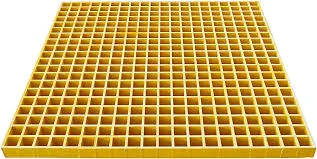
-
 Afrikaans
Afrikaans -
 Albanian
Albanian -
 Amharic
Amharic -
 Arabic
Arabic -
 Armenian
Armenian -
 Azerbaijani
Azerbaijani -
 Basque
Basque -
 Belarusian
Belarusian -
 Bengali
Bengali -
 Bosnian
Bosnian -
 Bulgarian
Bulgarian -
 Catalan
Catalan -
 Cebuano
Cebuano -
 China
China -
 China (Taiwan)
China (Taiwan) -
 Corsican
Corsican -
 Croatian
Croatian -
 Czech
Czech -
 Danish
Danish -
 Dutch
Dutch -
 English
English -
 Esperanto
Esperanto -
 Estonian
Estonian -
 Finnish
Finnish -
 French
French -
 Frisian
Frisian -
 Galician
Galician -
 Georgian
Georgian -
 German
German -
 Greek
Greek -
 Gujarati
Gujarati -
 Haitian Creole
Haitian Creole -
 hausa
hausa -
 hawaiian
hawaiian -
 Hebrew
Hebrew -
 Hindi
Hindi -
 Miao
Miao -
 Hungarian
Hungarian -
 Icelandic
Icelandic -
 igbo
igbo -
 Indonesian
Indonesian -
 irish
irish -
 Italian
Italian -
 Japanese
Japanese -
 Javanese
Javanese -
 Kannada
Kannada -
 kazakh
kazakh -
 Khmer
Khmer -
 Rwandese
Rwandese -
 Korean
Korean -
 Kurdish
Kurdish -
 Kyrgyz
Kyrgyz -
 Lao
Lao -
 Latin
Latin -
 Latvian
Latvian -
 Lithuanian
Lithuanian -
 Luxembourgish
Luxembourgish -
 Macedonian
Macedonian -
 Malgashi
Malgashi -
 Malay
Malay -
 Malayalam
Malayalam -
 Maltese
Maltese -
 Maori
Maori -
 Marathi
Marathi -
 Mongolian
Mongolian -
 Myanmar
Myanmar -
 Nepali
Nepali -
 Norwegian
Norwegian -
 Norwegian
Norwegian -
 Occitan
Occitan -
 Pashto
Pashto -
 Persian
Persian -
 Polish
Polish -
 Portuguese
Portuguese -
 Punjabi
Punjabi -
 Romanian
Romanian -
 Russian
Russian -
 Samoan
Samoan -
 Scottish Gaelic
Scottish Gaelic -
 Serbian
Serbian -
 Sesotho
Sesotho -
 Shona
Shona -
 Sindhi
Sindhi -
 Sinhala
Sinhala -
 Slovak
Slovak -
 Slovenian
Slovenian -
 Somali
Somali -
 Spanish
Spanish -
 Sundanese
Sundanese -
 Swahili
Swahili -
 Swedish
Swedish -
 Tagalog
Tagalog -
 Tajik
Tajik -
 Tamil
Tamil -
 Tatar
Tatar -
 Telugu
Telugu -
 Thai
Thai -
 Turkish
Turkish -
 Turkmen
Turkmen -
 Ukrainian
Ukrainian -
 Urdu
Urdu -
 Uighur
Uighur -
 Uzbek
Uzbek -
 Vietnamese
Vietnamese -
 Welsh
Welsh -
 Bantu
Bantu -
 Yiddish
Yiddish -
 Yoruba
Yoruba -
 Zulu
Zulu
GRP Pipes and Fittings Applications in Shipbuilding and Marine Infrastructure
The Importance of GRP Pipes and Fittings in Shipbuilding
In the shipbuilding industry, the materials used not only influence the quality and durability of a vessel but also its operational efficiency and maintenance costs. One such material that has seen widespread adoption is Glass Reinforced Plastic (GRP) for pipes and fittings. Known for its robust performance, GRP is revolutionizing the way ships are constructed and maintained.
Understanding GRP
GRP, also known as fiberglass, is a composite material made from a polymer resin reinforced with glass fibers. This unique combination grants GRP exceptional mechanical strength while maintaining a lightweight profile. As a result, GRP pipes and fittings are increasingly favored in various applications, particularly in marine environments where resilience and efficiency are paramount.
Advantages of GRP Pipes and Fittings
1. Corrosion Resistance One of the primary benefits of using GRP is its outstanding resistance to corrosion. Unlike traditional metal pipes, GRP does not rust or degrade when exposed to seawater or other corrosive substances. This property significantly extends the lifespan of the pipes in marine applications, reducing the need for frequent replacements and maintenance.
2. Lightweight Nature GRP pipes are considerably lighter than metal counterparts. This not only eases the installation process but also reduces the overall weight of the ship. A lighter vessel requires less power for propulsion, enhancing fuel efficiency and lowering operational costs.
3. Ease of Installation The lightweight nature of GRP allows for easier handling and installation. GRP pipes can be manufactured in various lengths and diameters, facilitating quicker assembly on-site. This capability can greatly reduce labor costs and project timelines, making GRP an attractive choice for shipbuilders.
grp pipes and fittings for ship building

4. Thermal and Acoustic Insulation GRP provides excellent thermal insulation and sound dampening properties. This quality is particularly beneficial in maintaining temperature-sensitive cargo and ensuring a quieter onboard environment, which enhances crew comfort and operational efficiency.
5. Versatility in Applications GRP pipes and fittings can be employed in a myriad of applications within a ship, from fresh and wastewater systems to fuel and hydraulic lines. Their ability to withstand extreme conditions makes them suitable for use in various onboard systems.
Environmental Considerations
In recent years, the shipbuilding industry has increasingly focused on sustainability and reducing its environmental footprint. GRP materials are not only durable but also contribute to resource conservation. By reducing the frequency of maintenance and replacements, GRP helps minimize waste generated from discarded materials. Moreover, as industries strive towards greener practices, the production processes of GRP are being continuously improved to lessen environmental impacts.
Challenges and Solutions
While GRP offers numerous advantages, it is not without challenges. Factors such as UV degradation can affect the longevity of exposed GRP components if not properly addressed. However, advancements in resin formulations and protective coatings are continually being developed to enhance the durability of GRP materials in harsh marine environments.
Conclusion
The shift towards using GRP pipes and fittings in shipbuilding represents a significant advancement in marine engineering. With unparalleled benefits such as corrosion resistance, lightweight properties, and versatility, GRP has positioned itself as a vital material in modern ship construction and maintenance practices. As the marine industry continues to evolve and prioritize sustainability, the role of GRP is expected to expand, offering a reliable and efficient solution to the challenges faced on the high seas. Shipbuilders looking to enhance their operational efficiency while promoting environmentally conscious practices would do well to embrace the potential of GRP technology in their projects.









